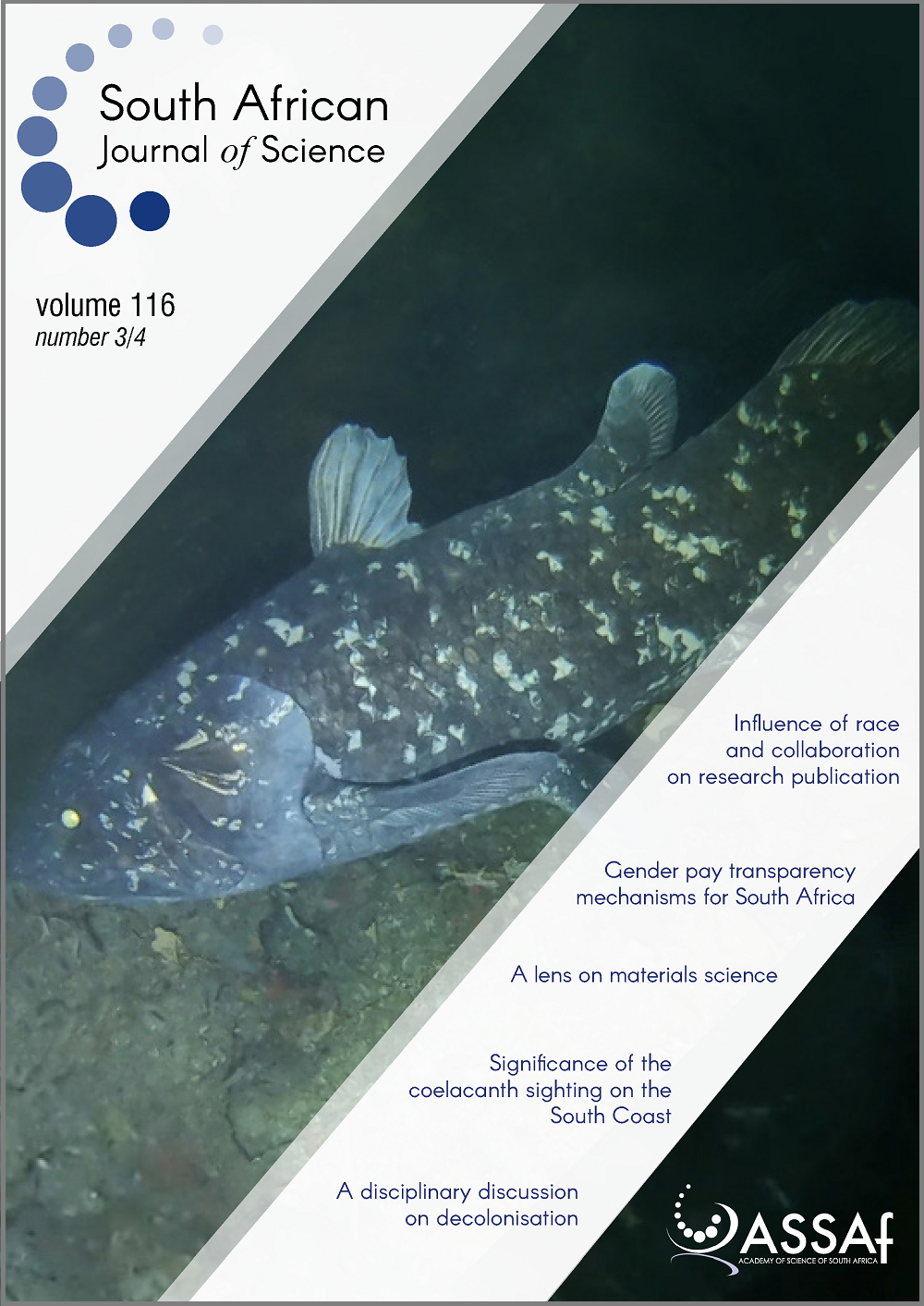Comments on ‘U-Pb dated flowstones restrict South African early hominin record to dry climate phases’ (Pickering et al. Nature 2018;565:226–229)
DOI:
https://doi.org/10.17159/sajs.2020/7094Keywords:
palaeoanthropology, archaeology, palaeoenvironment, karst science, geomorphologyAbstract
Pickering et al. (Nature 2018;565:226–229) utilised calcium carbonate flowstone deposits (i.e. speleothems) from eight Pliocene and Pleistocene South African Cradle of Humankind cave sites to propose that biases were created within the fossil record due to absent clastic sedimentation phases during wet periods, when caves were closed and only speleothems accumulated. Such a scenario has significant implications for our understanding of variability in hominin mobility, resource exploitation, functional repertoires and interactions with competitors in changing environmental and ecological contexts. We find considerable issues with the article. First, Pickering et al.’s contribution omits crucial fossil evidence from various stratigraphic units of the Sterkfontein Caves that indicates conditions were not always arid when the caves were open and sediments were deposited. Second, Pickering et al.’s proposal that clastic and speleothemic deposits (including faunal and floral material) form mutually exclusively is an overly simplified, binary depositional (and in this case environmental) framework that demonstrates an inherent bias in the sampling of cave deposits for dating. This creates the impression that either speleothems or clastic sediments are deposited and does not take into account the full spectrum of sedimentary complexity in karst caves. Third, closure of the caves across the Cradle of Humankind landscape during wet periods is not substantiated geomorphologically or speleologically; identification of the responsible process is critical to the proposed infilling scenario.
Significance:
- We propose that Pickering et al.’s interpretation of the environmental context of the South African early hominin record is problematic in that it omits crucial faunal and floral fossil evidence associating hominins with non-arid climates, is geomorphologically unsupported, and perpetuates biases against temporally and climatically representative clastic sediments due to challenges related to their dating.
Published
Issue
Section
License

All articles are published under a Creative Commons Attribution 4.0 International Licence
Copyright is retained by the authors. Readers are welcome to reproduce, share and adapt the content without permission provided the source is attributed.
Disclaimer: The publisher and editors accept no responsibility for statements made by the authors
How to Cite
- Abstract 1567
- PDF 677
- EPUB 383
- XML 461












.png)